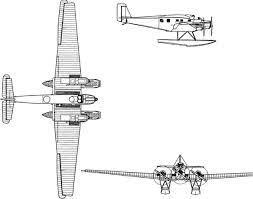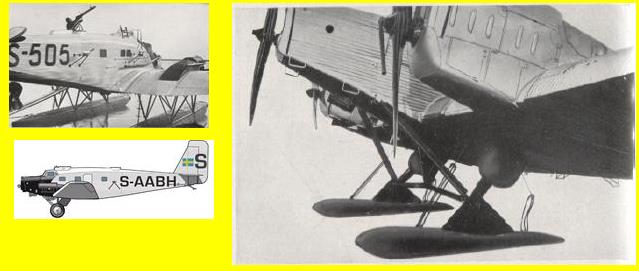The R 42 was the military version of the Junkers G 24; the 42 represents the reversal of the civil 24. Because of the armaments restrictions for the German Reich regulated in the Versailles Treaty, it could neither be built nor tested in Germany. The aircraft was delivered from the Linham branch in southern Sweden and, largely identical in construction to the Junkers K 30, was intended for export to the Soviet Union. The 23 bombers were delivered to the Fili branch near Moscow in 1926/27, where they were then completed with weapon installations. In the Soviet Union they received the type designation JuG-1. After being decommissioned by the military in 1931, they were still used under this type designation with minor modifications for passenger and freight transport.
JuG-1 (Russian built K30, converted from G24)
In 1925 the Soviet Army showed some interest in a heavy bomber aircraft. Therefore Junkers developed a military derivate of the G24 airliner. About 20 to 25 of this military K30 variante were ordered by the Russians. But the Fili production facilities were to small for the serial assembly of a large bomber aircraft. Finally the production assembly of the K30 was transfered to Limhamn in Sweden and designated R42. The Swedish built R42s were flown to Fili and got there their final military equipment. In Russia the R42 was designated as JuG-1. A total of 23 JuG-1 were delivered between 1926 and 1927. The JuG-1 was used by the Soviet Airforce until 1931. By then it was transfered to Aeroflot. None of the JuG-1 was really assembled at Fili. Only the military equipment was added there. The JuG-1 was the last Junkers aircraft handled by Fili. After completition of the delivery of the K30s Junkers retreated from Fili.
| Type |
|
| Engine |
3 Junkers L 5 |
| Dimensions |
Length 15,30 m , height 4,80 m , span 29,50 m , wing area 94.60 m2 , |
| Weights |
Empty 4320 kg, loaded 6780 kg , max. take off weight |
| Performance |
Max.. speed 175 km/h, cruising speed 155 km/h , range , endurance , service ceiling 3000 m , climb |
| Armament |
|


